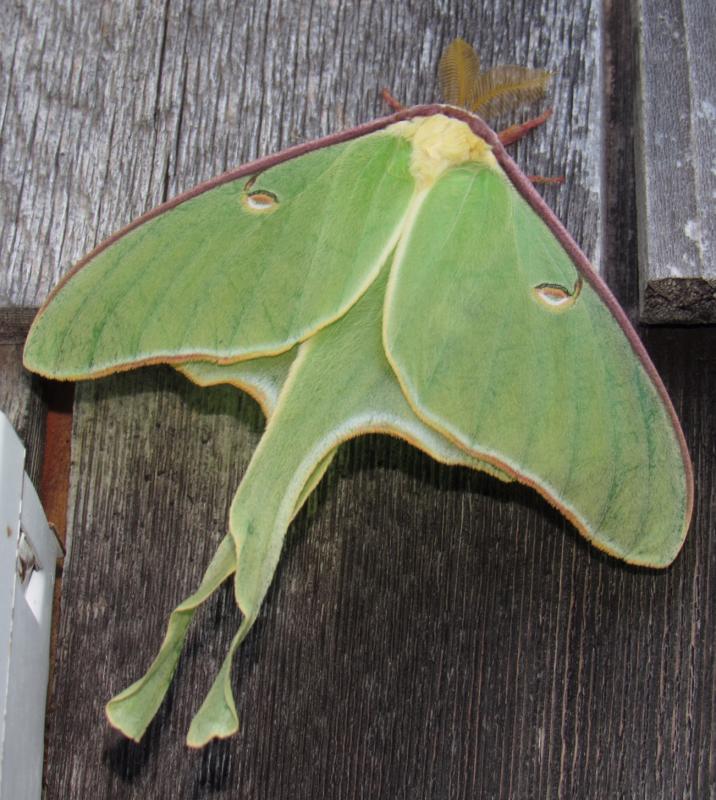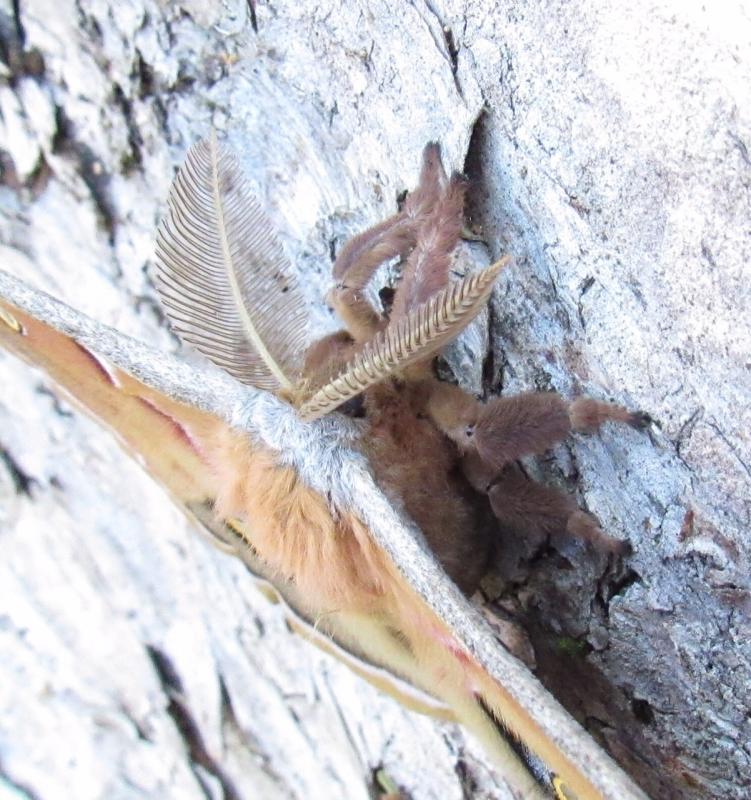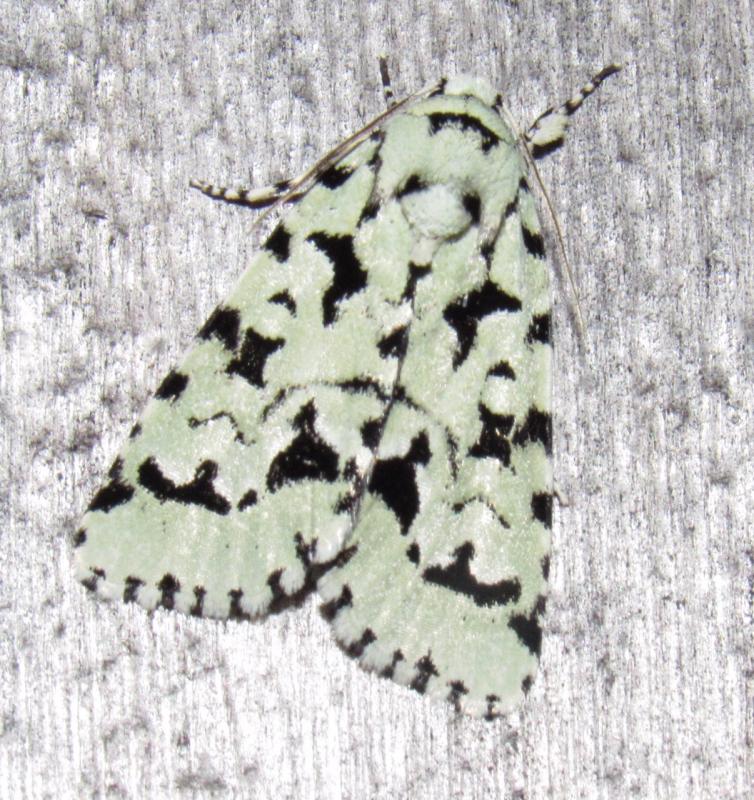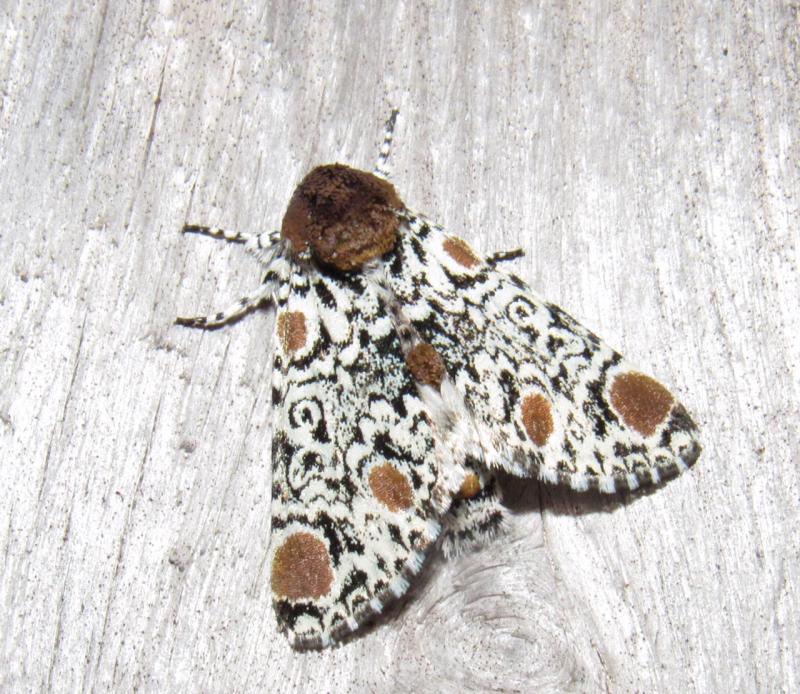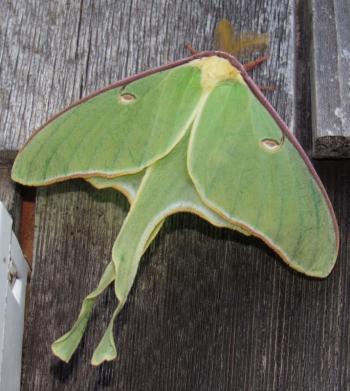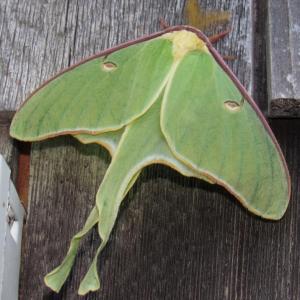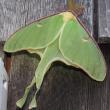Kristen Lindquist: The hidden world of moths
Here's the cast of characters: The Betrothed, The German Cousin, The Neighbor, The Confederate, The Slowpoke, The Old Maid, The Sweetheart, The Penitent, the Infant, The Herald. What's the drama unfolding here? An arcane Victorian allegory? An early soap opera? Would you believe, a field guide to moths?
A couple of summers ago I took a seminar at Eagle Hill Institute in Steuben, Maine to study Lepidoptera (moths and butterflies) with moth whiz Hugh McGuinness and butterfly buff Bryan Pfeiffer. I went for the butterflies, but it was the moths that really captured my attention. During that one intensive week I learned that there are thousands of moths out there, from microscopic to bigger than my hand, and that they are much more beautiful and varied creatures than I ever imagined.
Also, many of them have names that should be celebrated as found poetry. There's the Intractable Quaker, Explicit and Implicit Arches, Exasperating Platynota, Adorable Brocade, and Music-loving Moth. One family in particular—the underwings—is especially rich in evocative names. In addition to many of those listed in the "cast" above, their number includes Obscure, Widow, Tearful, Oldwife, Youthful, Sad, Once-Married, Mother, Semirelict, Darling, Sordid, Wonderful, Charming, Connubial, and Girlfriend Underwings.
You might well wonder what it is about these moths that elicited names rooted in human psycho-drama. Or you might wonder about the emotional state of the scientist who named them. Carl Linnaeus, an 18th-century Swedish botanist, created the system in which all living things are ascribed two Latin names, for genus and species. In his process of naming the underwings, he gave them Latin names based on a marriage/human relationship theme. And thus we have Catocala amatrix, The Sweetheart. It's easy enough to imagine that having to play Adam and come up with Latin names for the thousands of known creatures in the world led him to take some shortcuts. Most scientists simply followed along with this theme in naming underwings discovered later—and why not? It must have been kind of fun to add to this unfolding implied narrative.
Not only do underwings have intriguing names, these medium-sized moths are, upon close examination, quite striking to look at. Most have intricate greyish-brown patterning on the forewings, which lie flat and hide the hindwings when the moth is at rest. Posed like this, the moth blends in with bark or wood in that way that moths seem to do. But when it flutters and opens its forewings, many species reveal dramatic hindwings underneath that are colored red, pink, or orange with black markings. It can be quite a startling discovery, akin to catching a glimpse of a schoolmarm's hot pink undies under her sensible grey tweed suit. It also explains the genus name Catocala, which is derived from Greek for "beautiful underneath." You can imagine how this flash of color might startle an unsuspecting potential predator.
The one moth most people recognize is the charismatic Luna Moth, a large pale green moth with long, twisted tails that hang down when it pauses on vertical surface. When one turned up at the lights among 150-plus other moth species during a night photography session at Eagle Hill, even the jaded experts got excited. During the ensuing photo op, I learned that this moth only exists to mate. The male's bushy antennae pick up pheromones emitted by the female; neither has a mouth with which to eat! An Underwing kind of name thus might have been more appropriate for this moth—Smitten Moth, perhaps, or The Sex Machine.
At Eagle Hill I encountered for the first time a gorgeous Polyphemus Moth, a large, pinkish-brown moth with big blue- and yellow-ringed eyespots on the hindwings. How had I never noticed one of these beauties before? They're bigger than a Luna Moth and apparently common throughout their range. And their plant hosts are trees typically found in Maine: maple, oak, pine, birch. Those "eyes," like those of some big-eyed Disney creature that frolics with Bambi, captivated me.
Another group of moths I became taken with during our intimate late-night photography sessions was the daggers. We came across quite a few representatives of this sizeable group of predominately grey moths with dagger-like markings. There's the big American Dagger, the inappropriately named Unmarked Dagger. The Funerary Dagger has very dark innerwing markings and very little of the menace conveyed by its name.
My favorite daggers, though, were a few that stood out from the others in appearance. Green Marvel is not an insect superhero but a pale green moth with distinct black markings. As opposed to the big, obvious Luna Moth, however, this green moth was about an inch long. Only by close study of a wall full of moths drawn to a light did I ever become aware of this striking green insect's existence. Another was Harris's Three-Spot, an attractive moth uncommon enough to excite the special attention of our teachers Hugh and Bryan. Another small moth, its black-and-white patterned forewings sport three red spots each: a tiny work of art unseen by most.
My intense week studying moths in Down East Maine barely scratched the surface of this huge group of insects. As with many areas of life, just a shift in my focus onto these fascinating creatures with their subtle patterns and colors, their compelling names, and their alien insect lives opened my eyes to a whole new world. I find myself examining closely the bugs gathered under the porch light now, to see if that fluttering grey moth might expose pink hindwings. On hikes up Mount Battie, I peer into wild primrose blossoms looking for pink-and-yellow Primrose Moths. And I'm always awaiting another visitation by a large Saturnid with Bambi eyes with the name of a mythological Greek giant.
 Kristen Lindquist is an amateur naturalist and published poet who lives in her hometown of Camden.
Kristen Lindquist is an amateur naturalist and published poet who lives in her hometown of Camden.
Orchids —They're not just in the tropics
• Meditations on an unlikely harbinger of spring
• Meditations on the Snow Goose
• Sky-watching during the holiday season
• Understanding the Aurora Borealis
• Get to know the constellation Gemini
• Celebrate September’s full moon
• Northern Sky basics with the Big Dipper
• Early Christmas morning: Look up! A full moon, and Orion bright in the sky
Event Date
Address
United States

